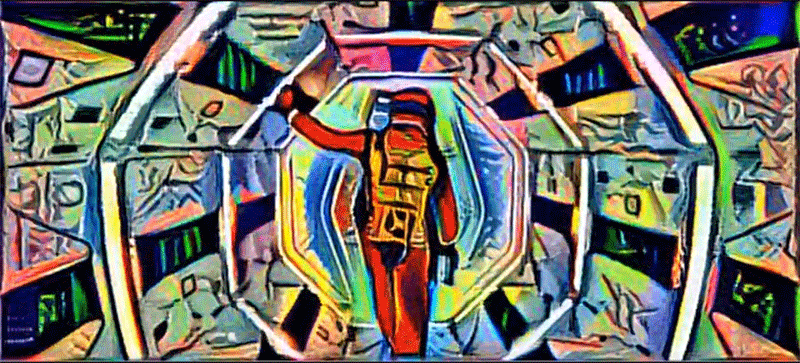Artist Bhautik Joshi has been running footage through Deep Dream, Google's trippy image making software, transforming the film into a vivid cubist spectacle. The images are generated using Deep Dream's deep learning algorithms, which can analyse image data and apply the style of one image to that of another. It is the technique that is at the heart of Google's image recognition tools, and their project to teach computers to analyse images and distinguish their content. But it also offers artists unique opportunities to create fascinating projects that fuse art and technology in surprising ways and generate compelling imagery that would be difficult to make using conventional means.
The footage that Joshi has chosen, from Stanely Kubrick's 2001: A Space Odyssey, is a perfect choice for this kind of treatment. 2001 is a film with a very clean visual design and bold, striking, and very recognizable images. Looking at Joshi's clip, you immediately know what the source material is. But the film is the story, at least in part, of humankind's relationship with technology, and to see it presented this way - at the cutting edge of where technology meets artistic expression - adds another layer of complexity to the subject material.
Joshi has also created a somewhat creepy video by feeding footage of Donald Trump's face into Deep Dream and fusing it with images of food, bullets and even teeth. Its a little disturbing, but it by showing the before and after footage the clip below helps to explain how the Deep Dream technology works.
Joshi isn't the only person using Deep Dream to making fascinating images. A number of artists have been feeding strange combinations of pictures into the software and generating some weird and compelling imagery. But he is the first person that I have seen creating images with such strong visual cohesion, and also the first I have seen to create video.
I'm fascinated by this, both the technology and its creative potential. I look forward to seeing what will come from it.


